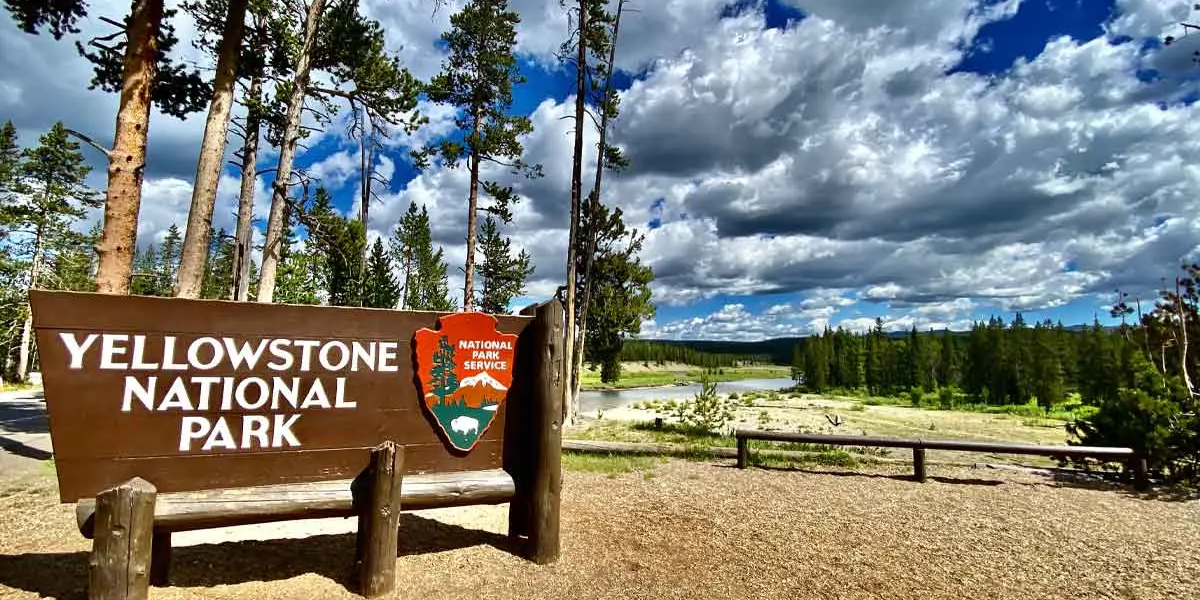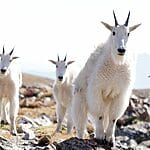12 Interesting Animals in Idaho – You Might Not Know
Idaho, a state adorned with high-altitude mountains, emerald valleys, and rushing rivers, is a haven for an extraordinary array of wildlife. You can spot many interesting animals in Idaho from the great grizzly bears to the elusive giant salamanders, each creature adds balance to the ecosystem.
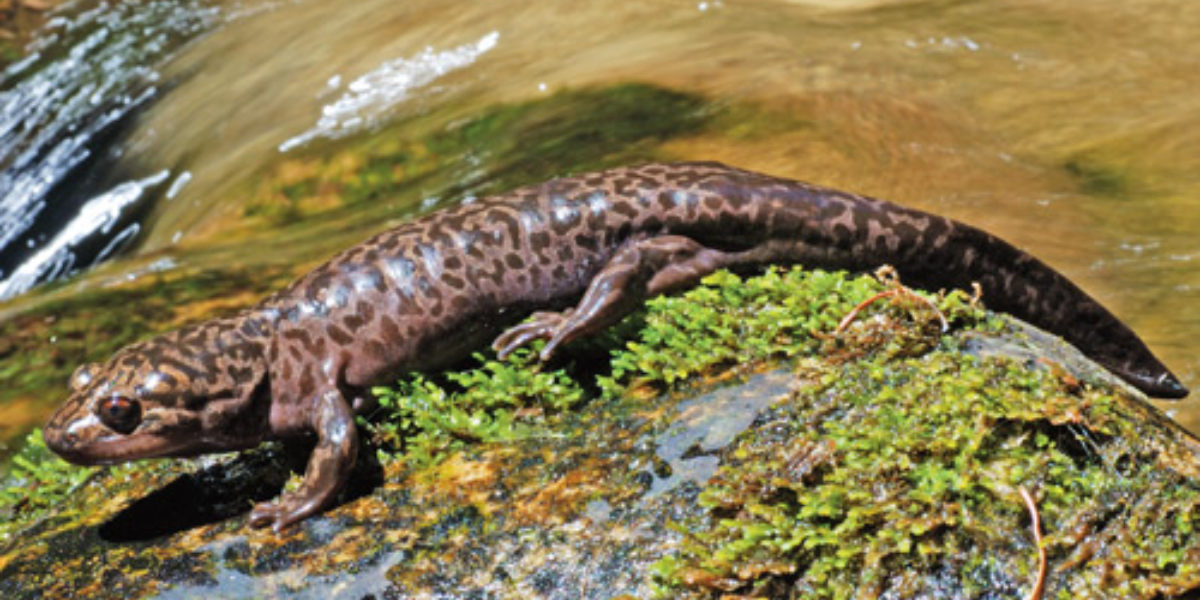
These interesting animals in Idaho are protected by organizations like the Idaho Fish and Game and the Idaho Wildlife Federation work. They are working tirelessly to conserve habitats, educate the public, and ensure the future of these remarkable wild animals.
Yellowstone National Park – World’s First National Park
Yellowstone National Park, established in 1872, is a pristine wilderness expanse primarily located in the U.S. states of Wyoming, Montana, and Idaho. This park is known as the world’s first national park, Yellowstone spans over 2.2 million acres and captivates visitors with its breathtaking landscapes and diverse ecosystems.

The park boasts an array of geothermal wonders, including the astonishing Old Faithful geyser that erupts at regular intervals. Yellowstone is a geological marvel, featuring hot springs, bubbling mud pots, and the Grand Prismatic Spring.

Wildlife thrives in Yellowstone, you can find endangered, and critically endangered species like bison, elk, grizzly bears, mountain bluebirds, and wolves. Yellowstone’s wilderness offers a haven for nature enthusiasts, providing a vast network of hiking trails, camping sites, and opportunities for water-based activities.
Visitors can immerse themselves in the untamed beauty of Yellowstone Lake or navigate the meandering Yellowstone River.
12 Interesting Animals in Idaho – (With Interesting Pictures)
Idaho is a haven for diverse and interesting wildlife, showcasing a range of species in its expansive landscapes. The state is home to remarkable wild animals such as elk, bighorn sheep, and pronghorn, which thrive in its mountainous terrains and expansive meadows.
The elusive mountain lion and wolverine also roam the vast wilderness of Idaho. But there are some most interesting animals in Idaho that you might not know, and we have gathered them in this blog for you.
Bighorn Sheep
Bighorn Sheep are primarily found in rugged mountainous terrains of Idaho, thriving in areas like the Hells Canyon National Recreation Area and along the Salmon River. These interesting animals in Idaho roam in steep, rocky landscapes, which provide both refuge from predators and rich grazing grounds.

An interesting behavior of these sheep is their dramatic, head-butting battles during mating season, which they use to show strength and dominance.
The best spot to observe Bighorn Sheep in Idaho is in the Hells Canyon area, renowned for its significant population. The Bighorn Sheep is listed as “Least Concern” on the IUCN Red List of Threatened Species.
Grizzly Bear – North American Brown Bear
Grizzly Bears are interesting animals in Idaho and are known as North American brown bears. They inhabit the remote wilderness areas of the Selkirk and Cabinet Mountains in the northern panhandle region. Their natural habitats encompass dense coniferous forests, alpine meadows, and rugged mountainous terrain, providing ample space for foraging and denning.

The Greater Yellowstone Ecosystem, spanning across Idaho, Montana, and Wyoming, is known for Grizzly Bear sightings. An interesting behavior of the grizzly bears is their remarkable fishing skills, often seen snatching salmon from rivers during the spawning season.
The Grizzly Bear is listed as a “Threatened species” on the IUCN Red List, emphasizing the need for conservation efforts to protect their habitats and mitigate human-wildlife conflicts.
Wolverines
Wolverines are elusive, and native animals primarily found in the remote, rugged mountains of the central and northern regions, such as the Sawtooth, Pioneer, and Bitterroot ranges.

These solitary mammals prefer high-altitude, alpine environments with abundant snowpack, as snow is crucial for their denning and reproductive behaviors. You can spot Wolverines in areas like the Sawtooth National Recreation Area.
An interesting behavior of Wolverines is their remarkable ability to travel long distances, especially in harsh winter conditions.
On the IUCN Red List, Wolverines are classified as “Least Concern,” but their populations in Idaho, face threats from habitat fragmentation and climate change, highlighting the need for continued conservation efforts.
Woodland Caribou
The Woodland Caribou, a distinct subspecies of caribou, were once native animals of Idaho and found in the Selkirk Mountains. They inhabit dense, mature forests with a mix of flat and mountainous terrains, which provide them with necessary resources like food and shelter.
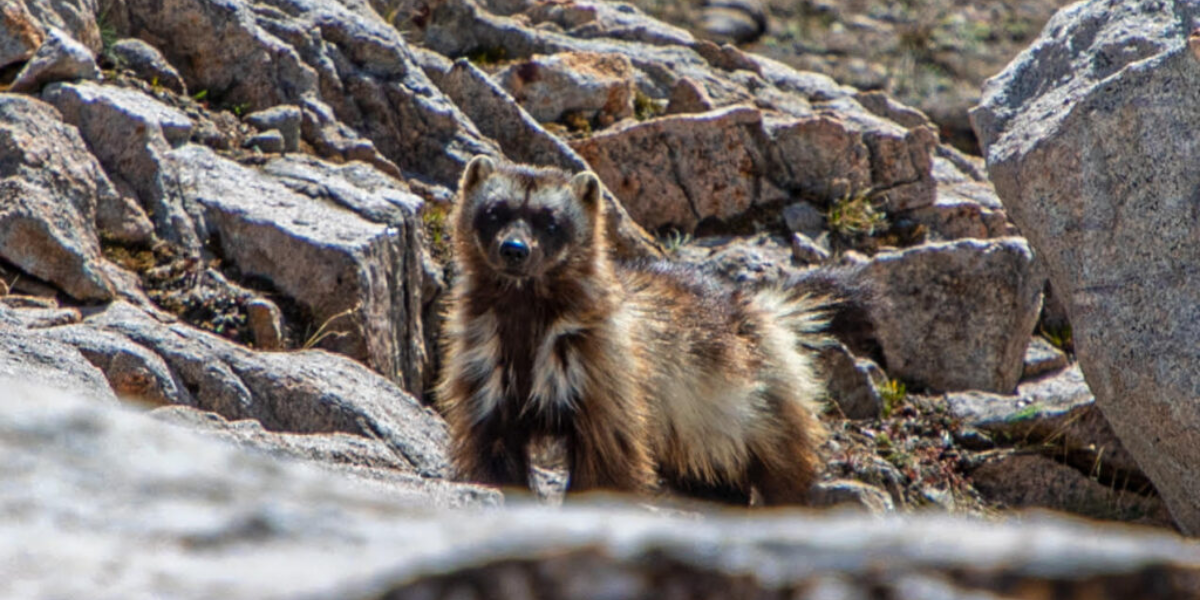
While historically present in Idaho, the population of woodland caribou has significantly decreased making sightings extremely rare. There isn’t a specific national park in Idaho known for Woodland Caribou.
An interesting behavior of woodland caribou is their unique adaptation to travel on snow with large, hoofed feet that act like natural snowshoes.
On the IUCN Red List, the Woodland Caribou falls under the category of “Endangered animals,” this shows their population is decreasing due to habitat encroachment, predation, and human disturbance.
Bobcats
Bobcats are relatively widespread, inhabiting a variety of landscapes from dense forests to brushy areas, river bottomlands, and even semi-arid regions. These wild cats are one of the most interesting animals in Idaho and are found throughout the state, including both wilderness areas and suburban areas.
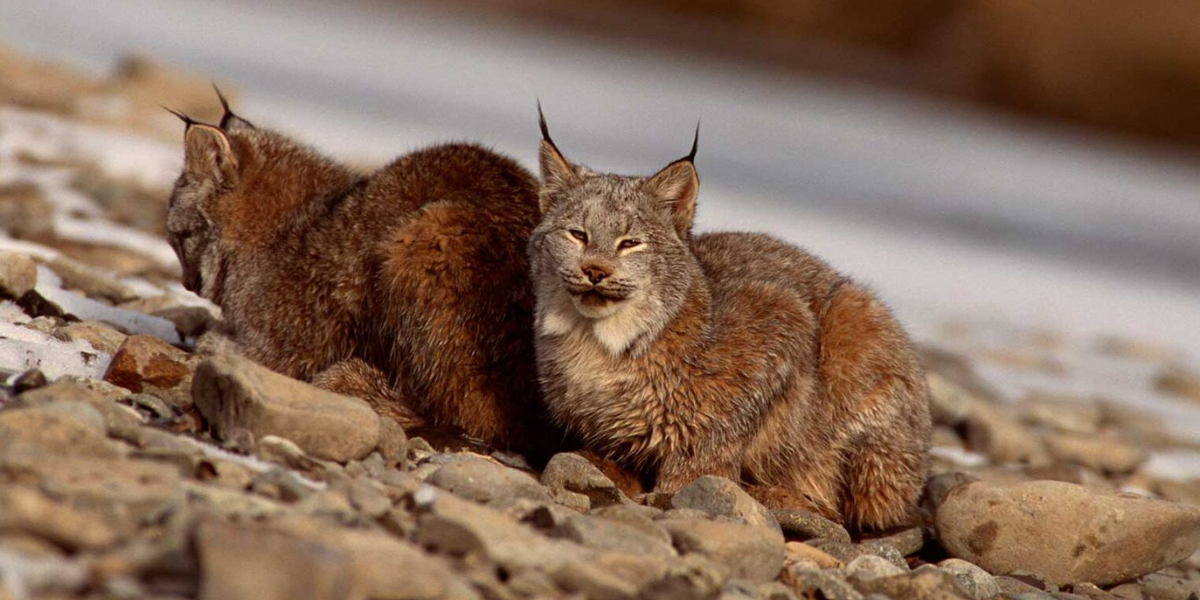
They are not limited to any national park, you can spot bobcats in areas like the Sawtooth National Recreation Area, where a large part of their population is thriving.
An intriguing behavior of bobcats is their stealthy hunting technique – they are patient predators who can remain motionless and then pounce on unsuspecting prey. On the IUCN Red List, Bobcats are listed as “Least Concern,” which shows that they have a stable and healthy population.
Grey Wolf /Timber Wolf
Grey Wolves, also known as Timber Wolves, are interesting animals in Idaho. These wolves thrive in diverse ecosystems, including forests, grasslands, and even semi-arid landscapes.

The Yellowstone National Park, which spans Idaho, Montana, and Wyoming, is the best place for wolf sightings. Moreover, an interesting behavior of Gray Wolves is their complex social structure, characterized by close family bonds and cooperative hunting in packs.
The conservation status of Grey Wolves varies by population. Some are categorized as “Least Concern,” while others, like the Mexican Gray Wolf, are classified as “Threatened Animals
” on the IUCN Red List of threatened species.
Mountain Bluebird
The Mountain Bluebirds are native birds and are one of the interesting animals in Idaho. These striking songbirds can be spotted across open spaces, meadows, and foothills, specifically in regions like the Snake River Plain and the Sawtooth Mountains.

Their natural habitats are sagebrush steppe, grasslands, and mountain meadows, where they nest in tree cavities or man-made structures.
Additionally, the Sawtooth National Recreation Area provides ample chances for birdwatchers to find Mountain Bluebirds.
An interesting behavior of these birds is their habit of hovering over the ground to catch insects, showcasing their agile and acrobatic flight skills. Fortunately, Mountain Bluebirds are not considered threatened species, and their conservation status on the IUCN Red List is categorized as “Least Concern,” indicating a stable population across their range.
Tiny Pygmy Shrews
The Tiny Pygmy Shrews, a diminutive and elusive mammal, inhabit the wooded and grassy areas. These tiny shrews are well-adapted to diverse habitats, including forests, grasslands, and wetlands, where they forage for insects and other small invertebrates.

An interesting behavior of Tiny Pygmy Shrews is their high metabolic rate, requiring them to consume nearly their body weight in food daily. These shrews are not assessed on the IUCN Red List, suggesting that their populations are currently stable and not considered threatened.
Western Rattlesnake – Pit Viper
The Western Rattlesnake, a venomous species, can be found in various regions of Idaho, including western North America. These snakes inhabit diverse natural environments such as grasslands, sagebrush plains, rocky outcrops, and forests, showcasing their adaptability to different ecosystems.

While not associated with national parks, areas like the Snake River Birds of Prey National Conservation Area may provide opportunities to encounter Western Rattlesnakes in their natural habitats.
An interesting behavior of these snakes is their use of a rattle at the end of their tail to produce a warning sound when feeling threatened, serving as a deterrent to potential predators.
These are one of the most interesting animals in Idaho, and their conservation status of the Western Rattlesnake is not individually assessed on the IUCN Red List, but their populations are generally stable, and they are not considered globally threatened.
Cutthroat Trout
The Cutthroat Trout, a native fish which is distributed across various water bodies in the state. You can spot them in mountain streams, lakes, and rivers. Their natural habitats span cold, clear waters, and they are often associated with high-altitude environments like those found in the Sawtooth Mountains and the Snake River Basin.

Yellowstone National Park, which extends into Idaho, is renowned for its pristine waters and offers visitors to observe Cutthroat Trout. They are renowned for their vibrant markings and distinctive red slash beneath the jaw, Cutthroat Trout are integral to Idaho’s freshwater ecosystems.
Pygmy Rabbits
Pygmy Rabbits, the smallest rabbits in North America, inhabit specific regions of Idaho, particularly the sagebrush-dominated landscapes of the state’s southwestern and southeastern parts. These tiny rabbits thrive in the sagebrush steppe, utilizing the dense sagebrush for both food and shelter.
Craters of the Moon National Monument and Preserve is an area where Pygmy Rabbits may be found due to the presence of suitable habitats. An interesting behavior of these rabbits is digging burrows, which they use for shelter and protection from natural predators/

Pygmy Rabbit is classified as “Near Threatened” on the IUCN Red List, highlighting the conservation challenges they face, such as habitat loss and fragmentation.
The Rocky Mountain Elk
The Rocky Mountain elks are one of the interesting animals in Idaho. These elks thrive in various regions of Idaho, with high populations in the state’s Rocky Mountains, and other mountainous ranges such as the Bitterroot Range and the Salmon River Mountains.

These elk are interesting animals in idaho and are adapted to diverse natural habitats, ranging from coniferous forests and grasslands to alpine meadows.
Yellowstone National Park, which spans Idaho, Montana, and Wyoming, is renowned for its significant elk population. An interesting behavior of Rocky Mountain elk is their bugling, a vocalization during the rutting season that serves to attract mates and establish dominance.
The conservation status of Rocky Mountain elk is of “Least Concern” on the IUCN Red List, indicating a stable population and minimal threats to their overall survival.
Native Plants in Idaho – (With Pictures)
Idaho, located in the northwestern region of the United States, boasts a diverse landscape that includes mountains, valleys, and high plateaus. The state’s varied ecosystems contribute to a rich array of native plants adapted to different climates and elevations. Below are some interesting native plants found in Idaho.
- Sagebrush (Artemisia tridentata)Sagebrush is an iconic plant of the arid regions in Idaho, particularly in the high desert areas. It’s well-adapted to the dry climate and alkaline soils, providing important habitat for various wildlife species.

- Western Yarrow (Achillea millefolium)This perennial herb is common in Idaho’s grasslands and meadows. It is known for its fern-like leaves and clusters of small, white flowers. Yarrow is often used in traditional Native American medicine.

- Bitterroot (Lewisia rediviva)The bitterroot is the state flower of Idaho and is found in the mountainous regions. It is recognized for its pink to purple flowers, this perennial plant has succulent leaves and a long taproot. It has cultural significance for Native American tribes in the region.

- Lodgepole Pine (Pinus contorta)Idaho’s mountainous landscapes are home to lodgepole pine forests. These trees are adapted to thrive in various elevations and are often seen in dense stands, especially in areas with a history of wildfire.

Frequently Asked Question about Interesting Animals in Idaho
What animals are most common in Idaho?
Grizzly bears, bighorn sheep, wolverines, wildcats, and Cooper’s hawks, are common animals in Idaho.
What is Idaho known for animals?
Idaho is home to a diverse range of animals, some of them are woodland caribou, grizzly bears and bald eagles, Pronghorn, and Elk.
What extinct animals lived in Idaho?
Corals, Ichthyosaur, Prehistoric sharks, dinosaurs, and mammoths are extinct animals that used to live in Idaho.
What is the most intriguing animal in Idaho?
Peregrine Falcon is the most intriguing animal in Idaho.
What animals are found in Boise Idaho?
There are many birds and mammals in Boise National Forest Idaho. Some of them are mule deer, Rocky Mountain elk, mountain goats, mountain lion, and black bear.
- 12 Interesting Animals in Dominican Republic - 2024-05-02
- 8 Common Dangerous Animals in Yosemite - 2024-05-01
- 11 Interesting Animals in the Midwest - 2024-05-01


